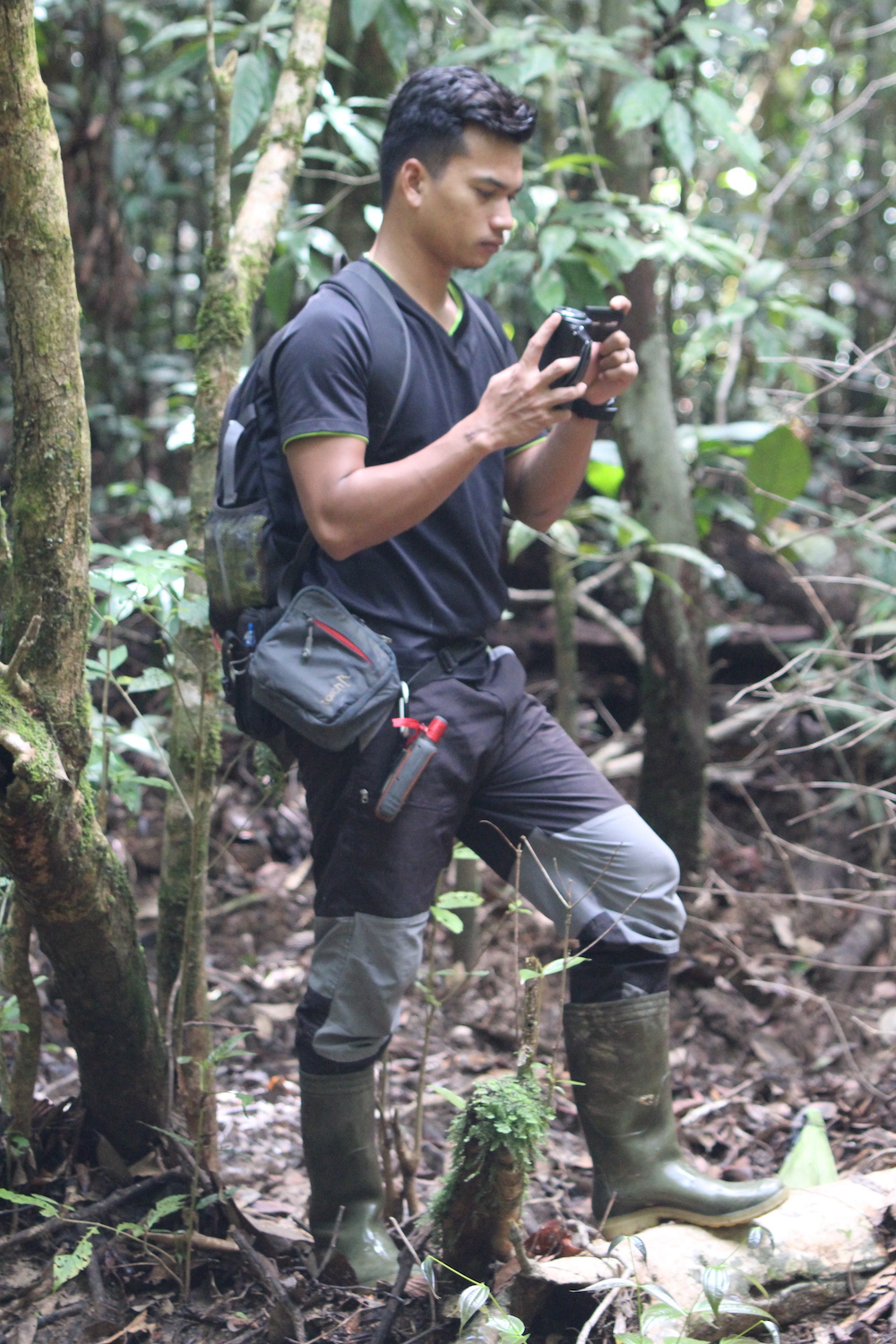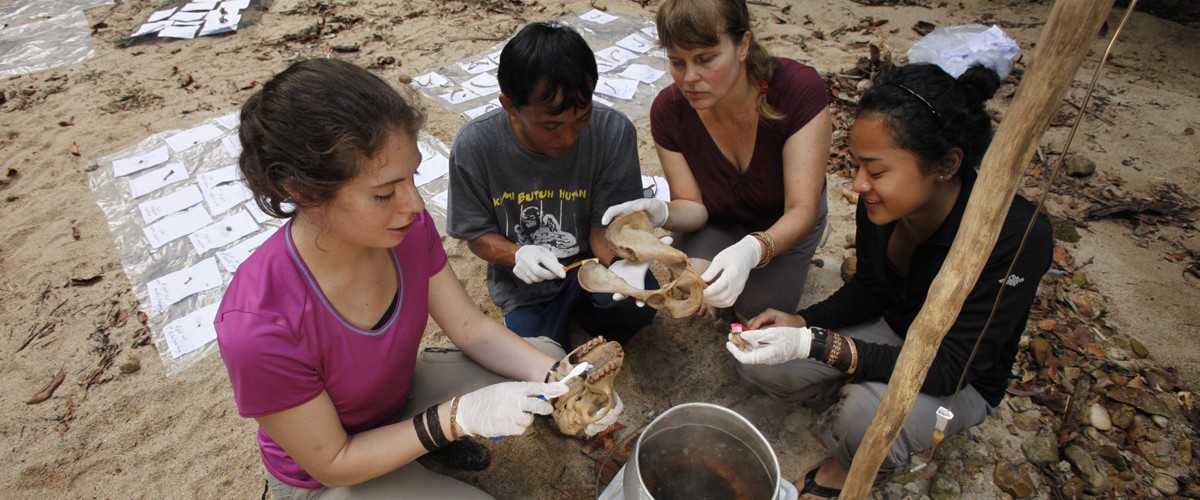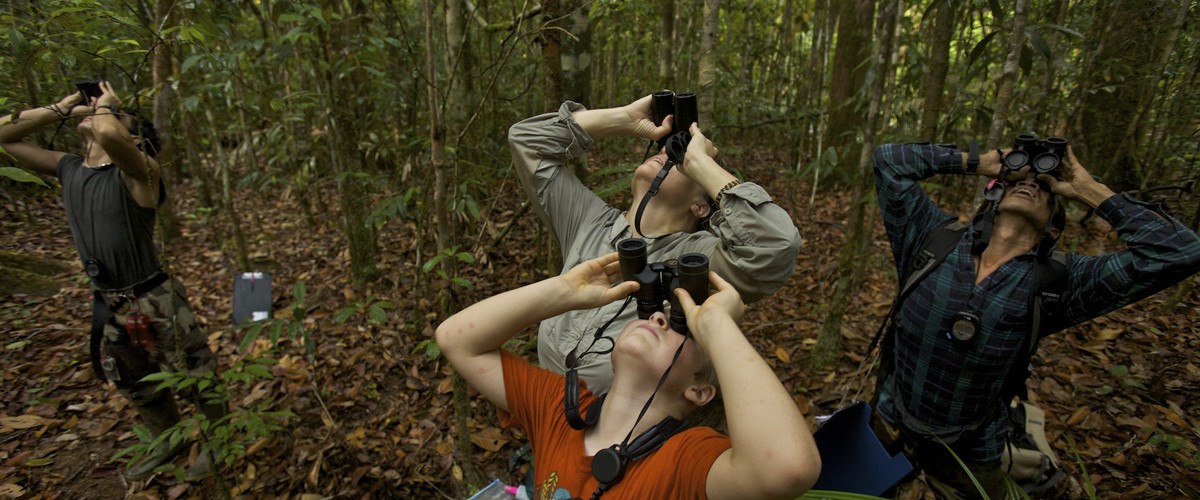By Yogi Saputra, Field Research Assistant
Hello my name is Yogi Saputra. I come from Sedahan Jaya Village, which is one of the villages directly adjacent to Gunung Palung National Park, in West Kalimantan. I am one of the field assistants for the Orangutan Project from the NGO Yayasan Palung (GPOCP) which is directed by Dr. Cheryl Knott.
Before I worked at Cabang Panti Research Station, for two years I worked freelance for a variety of non-permanent jobs. Then I received information that there was a vacancy to work as a field assistant on an orangutan research project. I joined the orangutan assistant team in March 2018. The team then consisted of 6 people, namely Hassan, Toto, Sabta, Sahril, Dang and myself. Since then, we have also welcomed Herman, Landha, Jaka and Dika to our team.

My daily work at Cabang Panti includes looking for orangutans, and following and observing orangutan activities. The activities of the orangutans that we observe include eating, resting, social activities and travel behaviors. We also observe urination and defecation, and collect samples. When the orangutan eats, we collect samples of the food, including fruit, seeds, termites, leaves, bark and more. Usually, the orangutans are followed by 2-3 assistants to collect data on an iPad, on a GPS (to collect data on the orangutan’s location and travel patterns), and to collect samples. We conduct phenology, where we survey the fruiting patterns of trees that orangutans feed from around GPNP. We also survey orangutan nests along transects located in the Rangkong river area, to collect data on new nests built each month, which helps us estimate orangutan populations.

One experience I will never forget is the first time I found orangutans in the forest without any other assistants around me. At that time, my GPS unit was low on battery and I had not yet memorized the trail system to easily navigate back to camp after the orangutan nested at sundown. When I was returning to camp, I took the wrong path and walked to a very far trail in the wrong direction. Eventually, I arrived at camp very late that night. Now I look back on that experience and can appreciate how much I have learned since then!
The research aspect that interests me most is my time spent following orangutans from the time they wake up until they go to sleep at night (after building their nest). There are so many activities I have observed that are amusing to me when I follow the orangutans all day. For example, I once followed a juvenile orangutan named Bayas. At that time Bayas was traveling with his mother, Bibi, and she traveled so fast that Bayas got left behind and cried. Bibi then came back to Bayas, but then he seemed to sulk all day. I thought that Bayas’ behavior was funny because it was very similar to that of a human child of his age.

I really like my job because apart from being able to work, I also gain a lot of knowledge while being here. I’ve enjoyed learning many things about plant morphology and memorizing the scientific names of all of the plants that orangutans eat. I hope the project will continue to grow, and that more Indonesian and foreign researchers will come to Cabang Panti so that I can continue to learn more things.
Management of Cabang Panti Research Station is conducted by the Gunung Palung National Park Office (BTN-GP) in collaboration with GPOCP/YP. Scientific research is carried out in conjunction with the Universitas Nasional (UNAS) and Boston University.









